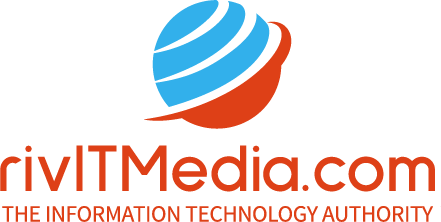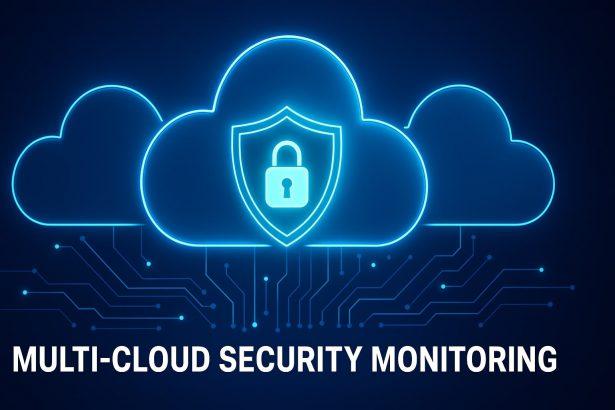Multi-cloud refers to using two or more cloud providers (e.g., AWS + Azure, or public + private clouds). Security monitoring is the ongoing observation, detection, alerting, and response to security-relevant events across those cloud environments.
So multi-cloud security monitoring is ensuring visibility, threat detection, compliance, logging, alerting, etc., across all your cloud providers in a unified or coordinated way.
Protect Your Business’ Cybersecurity Now!
Protect your business from evolving cyber threats with our tailored cybersecurity solutions designed for companies of all sizes. From malware and phishing to ransomware protection, our multi-license packages ensure comprehensive security across all devices, keeping your sensitive data safe and your operations running smoothly. With advanced features like real-time threat monitoring, endpoint security, and secure data encryption, you can focus on growth while we handle your digital protection. **Request a free quote today** for affordable, scalable solutions and ensure your business stays secure and compliant. Don’t wait—get protected before threats strike!
Why It Matters
Using multiple clouds gives flexibility, avoids vendor lock-in, and allows selecting “best-of-breed” cloud services. But it also introduces risks:
- Increased attack surface: Each cloud comes with its own misconfigurations, APIs, and identity systems. A misstep in one provider can compromise others.
- Lack of unified visibility: Without centralized monitoring, logs and events are fragmented, making it easy to miss anomalies.
- Inconsistent security policies: Different providers use different terminologies and controls, making it hard to enforce consistent security policies.
- Compliance risks: Regulatory frameworks require auditing, access logging, and data protection. Gaps in security controls across clouds can lead to compliance failures.
- Operational overhead: More clouds mean more dashboards, more tools, and more threat vectors, increasing the risk of misconfigurations and alert fatigue.
Key Challenges
| Challenge | Description |
|---|---|
| Data fragmentation | Logs, metrics, and events are spread across providers, often in incompatible formats. |
| Scalability / volume | Large volumes of logs and alerts make processing and prioritization difficult. |
| Different control models / tools | Each provider has its own IAM, APIs, and tools; integration is complex. |
| Misconfiguration risk | Different defaults and features increase the risk of security gaps. |
| Latency / integration delays | Inconsistent tool support across cloud platforms can lead to delays. |
| Skill & resource constraints | SMEs often lack dedicated cloud security staff. |
| Alert fatigue / signal-to-noise | Too many alerts can obscure real threats. |
Best Practices for Multi-Cloud Security Monitoring
- Centralized Visibility & Logging
- Aggregate logs and metrics from all cloud platforms into a single system.
- Normalize formats and use a central dashboard or SIEM to correlate events.
- Continuous Monitoring & Real-Time Alerting
- Automate anomaly detection and ensure alerts are timely and actionable.
- Implement Cloud Security Posture Management (CSPM)
- Use CSPM tools to detect misconfigurations and enforce best practices.
- Least Privilege / Zero Trust IAM
- Enforce role-based access and multi-factor authentication.
- Regularly audit IAM policies and inactive accounts.
- Standardize Security Policies Across Clouds
- Define consistent guardrails for encryption, segmentation, and logging.
- Use Infrastructure as Code (IaC) for policy consistency.
- Automate Where Possible
- Implement auto-remediation for routine misconfigurations.
- Automate compliance checks and patching.
- Regular Audits & Penetration Testing
- Perform periodic reviews and external security assessments.
- Incident Response Plan Spanning All Clouds
- Ensure IR plans cover all cloud environments.
- Prepare cross-cloud breach scenarios.
- Data Protection & Encryption
- Encrypt data at rest and in transit.
- Establish clear key management policies.
- Vendor & Tool Evaluation
- Choose tools that support multi-cloud environments and have strong integrations.
- Staff Training & Awareness
- Train teams on cloud-specific risks and incident response protocols.
Tools & Technologies
| Category | Description |
|---|---|
| SIEM / Log Aggregation | Centralizes log data for analysis and correlation. |
| Cloud Security Posture Management (CSPM) | Identifies misconfigurations and ensures best practices. |
| Cloud Infrastructure Entitlement Management (CIEM) | Manages cloud identities, roles, and permissions. |
| Workload Protection | Detects suspicious behavior in workloads. |
| Network Monitoring | Audits network traffic and enforces segmentation. |
| Threat Intelligence | Identifies abnormal patterns using ML/AI. |
| Compliance & Audit Tools | Automates compliance checks and audits. |
Step-by-Step Implementation for SMEs
- Inventory & Mapping
- Map all cloud assets and understand responsibilities.
- Risk Assessment
- Identify critical assets and potential threats.
- Define Policies & Standards
- Create standardized policies and align with benchmarks.
- Select Tools / Consolidation
- Choose platforms that support all cloud environments.
- Set Up Centralized Logging & Dashboards
- Connect cloud APIs and normalize logs.
- Implement IAM & Least Privilege
- Audit and streamline permissions across clouds.
- Continuous Detection & Alerting
- Create actionable alerting rules and tune for relevance.
- Automate Remediation & Drift Correction
- Use scripts or tools for policy enforcement.
- Audit & Testing
- Regular internal reviews and external pen tests.
- Review & Improve Regularly
- Track key metrics and adapt to changes.
Real-World Use Cases (Hypothetical)
- A company using Azure and AWS detected inconsistent alerting configurations. Centralizing log management revealed an exposed storage bucket, which was promptly secured.
- Another SME adopted Infrastructure as Code templates to standardize IAM roles across Google Cloud and AWS, reducing excessive permissions.
Key Metrics / KPIs to Track
- Mean time to detect/respond to incidents
- Number of misconfigurations found and resolved
- False positive rate of alerts
- Cloud services coverage
- Percentage of accounts using MFA
- Number of unused or risky permissions
Conclusion
Multi-cloud security monitoring is critical for businesses adopting a diverse cloud strategy. It ensures visibility, mitigates risk, and supports compliance across complex environments. With the right practices, tools, and processes, SMEs can gain control over their cloud security without adding unnecessary complexity.
Protect Your Business’ Cybersecurity Now!
Protect your business from evolving cyber threats with our tailored cybersecurity solutions designed for companies of all sizes. From malware and phishing to ransomware protection, our multi-license packages ensure comprehensive security across all devices, keeping your sensitive data safe and your operations running smoothly. With advanced features like real-time threat monitoring, endpoint security, and secure data encryption, you can focus on growth while we handle your digital protection. **Request a free quote today** for affordable, scalable solutions and ensure your business stays secure and compliant. Don’t wait—get protected before threats strike!




